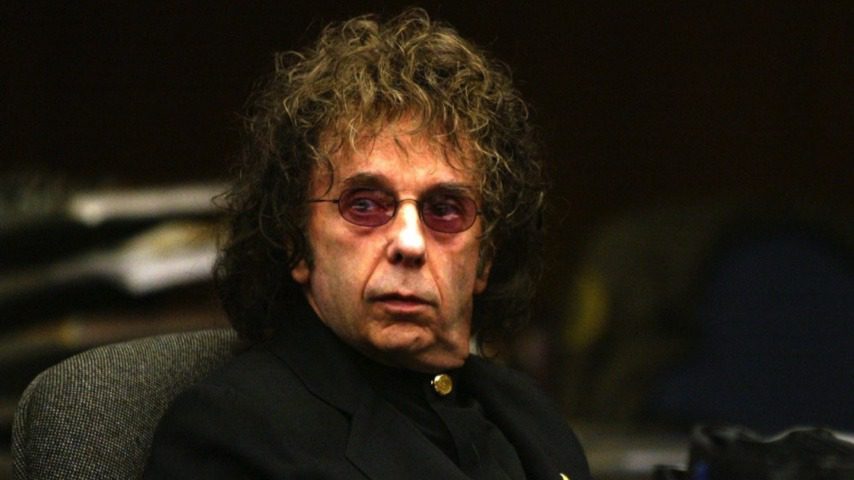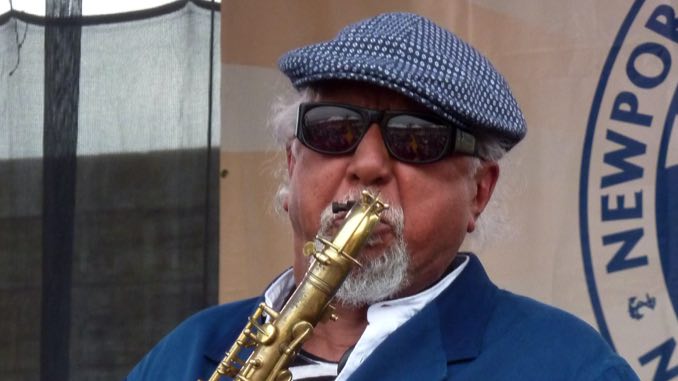[Editor’s note: Lana Clarkson. You can’t examine the life of Phil Spector without remembering the life he took away. The actress and model was 40 years old when Spector shot her at his home in 2003. As we remember his life, we won’t forget hers.]
Genius is no guarantee of happiness. There’s no better proof of this than the tragic life of Phil Spector.
Spector created rock ’n’ roll classics that served as templates for admirers such as John Lennon and Brian Wilson. But he died of Covid-19 on Saturday at age 81 as a convicted murderer serving a sentence of 19 years to life.
Make no mistake: He was a genius. He crafted the “Wall of Sound,” a big-band approach to rock ’n’ roll that gave a fledgling genre an epic scale. That production approach yielded the very best singles of the “Girl Group” era, including the Ronettes’ “Be My Baby” and the Crystals’ “Da Doo Ron Ron” and “Then He Kissed Me.” Spector produced and co-wrote the Righteous Brothers’ “You’ve Lost That Lovin’ Feelin’,” the most often played song of the 20th century, according to BMI.
Spector produced such standout solo singles by the ex-Beatles as John Lennon’s “Imagine” and George Harrison’s “My Sweet Lord.” And he created the greatest album of Christmas music in history: 1963’s A Christmas Gift for You from Phil Spector.
On the other hand, his heavy handedness spoiled such albums as Leonard Cohen’s Death of a Ladies’ Man and the Ramones’ End of the Century. Paul McCartney so hated what Spector did to the Beatles’ Let It Be album in post-production—and with good reason—that he insisted that Capitol release the pre-Spector version as Let It Be … Naked.
And Spector’s personal life was a mess. The former Veronica Bennett, who became Ronnie Spector as lead singer of the Ronettes and as Phil’s wife, compared their marriage to house arrest. After they divorced, Phil led an increasingly isolated life in his mansion, collecting handguns, drinking heavily and stoking his own paranoia. He used one of those guns in 2003 to kill Lana Clarkson, a struggling actress that he had brought home. After one jury was hung in 2007, another jury found him guilty in 2009.
Many histories of rock ’n’ roll claim that the music suffered a dry spell between the time Elvis Presley went into the army and the time the Beatles first arrived in America. But that claim ignores the glories of the Brill Building and the girl groups, perhaps because so many of the key artists were female and/or Black. Spector was neither, of course, but the singers he worked with—such as Tina Turner, Darlene Love, La La Brooks and his wife—were often both. Some of his favorite co-writers were Jewish women: Carole King, Cynthia Weil and Ellie Greenwich.
Back in the 1950s, at the dawn of rock ’n’ roll, recording sessions were quick and dirty: get it done in an hour or two and ship it off to the radio stations. Producers Jerry Leiber and Mike Stoller changed all that by taking their time with such clients as Elvis Presley, the Coasters and the Drifters, rehearsing the musicians, writing string charts and structuring the arrangements. One day they got a call from their mentor, the legendary record man Lester Sill.
“Lester called me up one day,” Leiber told me in 1987, “and said, ‘Jerr, I want you to do me a favor.’ The answer to that was always, ‘Anything you want, Lester.’ He said, ‘There’s this kid out here who’s really talented named Phil Spector, but he’s bored with the scene. He loves the way you guys make records, and he’d like to hang with you.’ I said, ‘You mean like an apprenticeship? Alright, we’ll sign him for a couple years. Send him out.’
Listen to the pre-Broadway version of Leader of the Pack featuring a character based on Spector.
“We started that fall. I wrote a couple of tunes with him; ‘Spanish Harlem’ was one. He’d come to all our sessions. He was a good guitar player; we got him gigs around town as a sideman. Finally we gave him the guitar lead on ‘On Broadway.’ Whenever I could convince someone to use him, I’d get him work.”
With that apprenticeship behind him, Spector formed a new record company with Sill named Philles after their first names. He worked in L.A.’s Gold Star studio, cramming multiple players on each instrument into the smallish room, recording them all at once to get the blend of parts and then sending the signal through Gold Star’s echo chamber to make the sound even bigger than it already was.
Those musicians, dubbed the “Wrecking Crew” included such legendary figures as drummer Hal Blaine, keyboardist Leon Russell, guitarist Glen Campbell, bassist Carol Kaye, guitarist Barney Kessell, trumpeter Herb Alpert, percussionist Sonny Bono, drummer Earl Palmer, keyboardist Harry Nilsson, saxophonist Art Pepper, keyboardist Billy Preston, keyboardist Larry Knechtel and arranger Jack Nitzche.
The method finally coalesced on the Crystals’ 1963 single, “Da Doo Ron Ron.” Here was a track that sounded as big as an orchestra and yet rocked as hard as a power trio. That’s a difficult trick to pull off, but Spector did it by rehearsing his outsized band to hit every mark in the arrangement. It begins with a blaring, extended chord from the horn section over handclaps. Multiple percussionists and guitarists keep it driving forward; a drum fill by Hal Blaine shifts it into a higher gear; a 15-year-old La La Brooks sings the giddy lead, and Steve Douglas takes it home with a sax solo.
The pinnacle, though, came just two months later, as Phil surrounded his wife Ronnie with an ocean of sound on “Be My Baby.” Opening with Blaine’s indelible drum figure, soon reinforced by an army of guitars and strings, the song has Ronnie frankly confessing female desire as had seldom happened in pop music at that point: “The night we met I knew I needed you so.” Everything was big—the backing voices, the drums, the bass, the handclaps—implying that the narrator’s craving was just as large. Brian Wilson, leader of the Beach Boys, often said it was his favorite record of all time.
“Brian just adored Phil,” Beach Boy Carl Wilson, Brian’s kid brother, told me in 1983. “He couldn’t get enough of Phil. Brian started going to Phil Spector sessions, and it just blew him away. Phil would play things back so loud it was scary. I think the psychological and emotional impact of going in and hearing songs before they came out made him totally fascinated with Phil, under a spell almost. That was Brian’s favorite kind of rock; he like it better than he early Beatles stuff. He loved the Beatles’ later music when they evolved and started making intelligent, masterful music, but before that Phil was it.
“If you listen to Pet Sounds, you can tell that the person who made that record loved Phil Spector, just as you can hear Beatles records and tell they loved Buddy Holly and the Everly Brothers. Brian just took Phil’s production techniques and applied them to a more refined, more evolved music. For all their production, Phil’s stuff was mostly real simple tunes; Brian’s were far more complex. Brian did a lot with dynamics; his music would be big and loud, and then get soft and change color and tempo. Phil was mostly loud.”
In 1964, Spector signed the first white act for Philles Records: a male-vocal duo called the Righteous Brothers. For them, he produced their three best singles—and three of Spector’s finest efforts: “You’ve Lost That Lovin’ Feeling,” “Just Once in My Life” and “Ebb Tide.”
In 1966, Spector produced “River Deep—Mountain High,” a single for Ike & Tina Turner, which many observers—including John Lennon and George Harrison—have called the producer’s greatest work. Tina’s voice is backed by the tallest, thickest Wall of Sound Spector ever built. The song was a #3 hit in England but did no better than #88 at home in the U.S. The producer was so despondent that he temporarily retired from the business.
He was lured out of retirement three years later to produce the “Black Pearl,” the only hit for the Indiana R&B band, the Checkmates, Ltd. The producer was then hired to clean up the recordings for the Beatles’ Let It Be album so they could be released. He added controversial female vocals and string charts to the original tapes. Lennon and Harrison were pleased; McCartney was decidedly not.
Spector produced a number of projects for both Lennon and Harrison, but his behavior grew more and more erratic, with Leonard Cohen and the Ramones reporting great frustration with Spector’s gun-toting, prima donna behavior. After that, he sank into a Citizen Kane-like retirement in California until it all ended in murder and prison.
What was his “Rosebud”? Well, his father, Ben Spector, a refugee from the Ukraine who became an ironworker in the Bronx, committed suicide when his son Phil was eight. The father’s tombstone read, “Ben Spector. Father. Husband. To Know Him Was To Love Him.” In 1958, the 17-year-old Spector wrote a song called “To Know Him Is To Love Him,” sung by Annette Kleinbard, his bandmate in the Teddy Bears. It became a #1 hit in the U.S. and #2 in the U.K. The song later became a hit for Bobby Vinton, Peter & Gordon and the Trio (Dolly Parton, Emmylou Harris and Linda Ronstadt).
Unfortunately, when it came to Spector, to know him was not to love him. But it would be a mistake not to admire his work, for he created some of the greatest singles in the history of American music.




